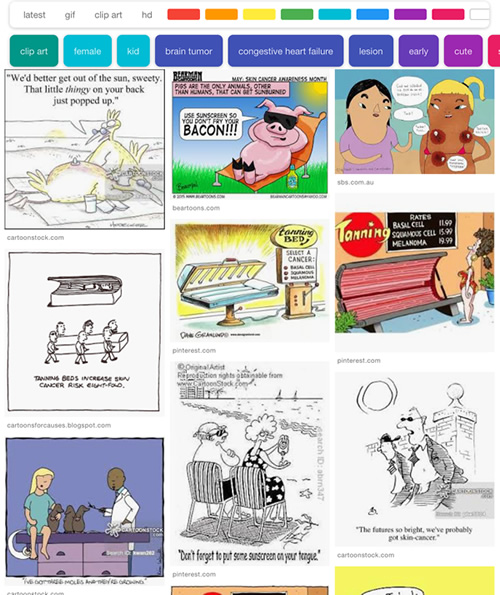|
Booster Club Families,
We are asking our booster club families to have a discussion regarding melanoma awareness and prevention with your Gymnasts.
As you may know Coach Jordyn recently lost her mother to Melanoma. Additionally, Paige Powers’(formally Girl’s L 8/9) father was recently diagnosed with stage 4 melanoma.
On behalf of Jordyn McIntyre’s family, OGBC will be promoting melanoma awareness during this years AWC. Additionally, we will be supporting Michigan Comprehensive Cancer Center via a small portion of our leotard sales.
We are hoping that all of our gymnasts and families will join us in promoting melanoma awareness and prevention during this event! Here is how you can help:
1. Have a family discussion about the importance of prevention and screening. Additionally, we hope that as a family you will consider doing self screenings and/ or get a professional screening from you health care provider.
2. We are asking our Olympia gymnasts to make posters for melanoma awareness and prevention to display at the Meet. Individual posters are appreciated, however, we recommend that you work in groups of 5-6 per poster. Olympia will allow groups that are off school for MLK to work on their posters in the lobby from 2-3:30 Monday 15th. Poster boards will be provided. Please bring all other supplies needed (markers, crayons, clip art, scissors, tape, etc). If you are unable to make it on Monday, please try to allow time over the weekend and/or early next week to work on your posters with your group.
Topics for posters:
GIRLS TEAM
Levels 9-10, Xcel Gold & Platinum: Symptoms and warning signs of skin cancer.
Levels 5-8: Facts about skin cancer
Level 2-4 & Xcel Silver: Skin cancer prevention
BOYS TEAM ALL LEVELS: Cartoons and clip art posters about skin cancer and the dangers of tanning. See cartoon example googled below. *Please make sure cartoons are appropriate for children.
Tips: Collect the facts you would like to highlight. Print Melanoma Ribbons (Melanoma is a black ribbon) visual aids, cartoons, etc. ahead of time. With your group, plan out your poster on paper before you start your poster. Think of fun ways to incorporate being a “Warrior” in your design.
PLEASE BRING COMPLETED POSTERS TO SET UP OR PLACE THEM IN THE PROSHOP PRIOR TO WEDNESDAY JANUARY 17th.
Below you will find some information to use in your discussions and posters:
- More than 90% of skin cancer is caused by sun exposure.
Non-melanoma skin cancer is caused by the UV rays from the sun. Unprotected exposure to UV rays affect you the same whether they come from being outdoors, or from tanning booths, or even through your car or home windows.
- Each hour, 1 person dies from skin cancer.
About 2,800 people will die of non-melanoma skin cancer and about 8,000 will die of melanoma in the U.S. this year. The sad thing is that many of these deaths could have been prevented by simply protecting one’s self from the sun.
- Skin cancer accounts for more than 50% of all cancers combined.
Skin cancer is the most commonly diagnosed type of cancer among men and women.
- More than one million cases of skin cancer will be diagnosed this year.
The American Cancer Society estimates that 1.5 million cases of skin cancer will be diagnosed this year.
- Skin cancer is most deadly for African Americans, Asians, and Latinos.
Although the risk factor is rather low for African Americans, Asians, and Latinos, skin cancer can be the most deadly for these groups.
- 1 in 3 Caucasians will be diagnosed with skin cancer sometime in their life.
1 in 5 Americans will be diagnosed in their lifetime with skin cancer. The risk factor is higher for Caucasians, with it being in 1 in 3.
- One bad burn in childhood doubles the risk factor for melanoma later in life.
Protecting children against UV exposure is essential for skin health into adulthood. A blistering sun burn during childhood increases the risk of melanoma as an adult. Melanoma is the deadliest form of skin cancer.
- Men are diagnosed with skin cancer more often than women.
According to the American Cancer Society men are twice as likely to develop skin cancer as women. In fact, it is more common than prostate cancer, lung cancer, and colon cancer in men over 50. This makes skin cancer the most common cancer in men over 50.
Symptoms of Skin Cancer
- A small lump (spot or mole) that is shiny, waxy, pale in color, and smooth in texture.
- A red lump (spot or mole) that is firm.
- A sore or spot that bleeds or become crusty. Also look for sores that don't heal.
- Rough and scaly patches on the skin.
- Flat scaly areas of the skin that are red or brown.
- Any new growth that is suspicious.
The Skin Cancer Foundation recommends using a sunscreen with an SPF 15 or higher as one important part of a complete sun protection regimen. However sunscreen alone is not enough.
- Seek the shade, especially between 10 A.M. and 4 P.M.
- Do not burn, ever.
- Avoid tanning and UV tanning booths.
- Apply 1 ounce (2 tablespoons) of sunscreen to your entire body 30 minutes before going outside. Reapply every two hours.
- Cover up with clothing, including a broad-brimmed hat and UV-blocking sunglasses.
- Keep newborns out of the sun. Sunscreens should be used on babies over the age of six months.
- It is recommended that each person examine their skin head-to-toe every month for skin abnormalities.
- See your physician every year for a professional skin exam.
- If you suspect that a lump, spot, or mole may be suspicious of skin cancer, see your doctor immediately. When detected early, it is highly treatable.

|
|